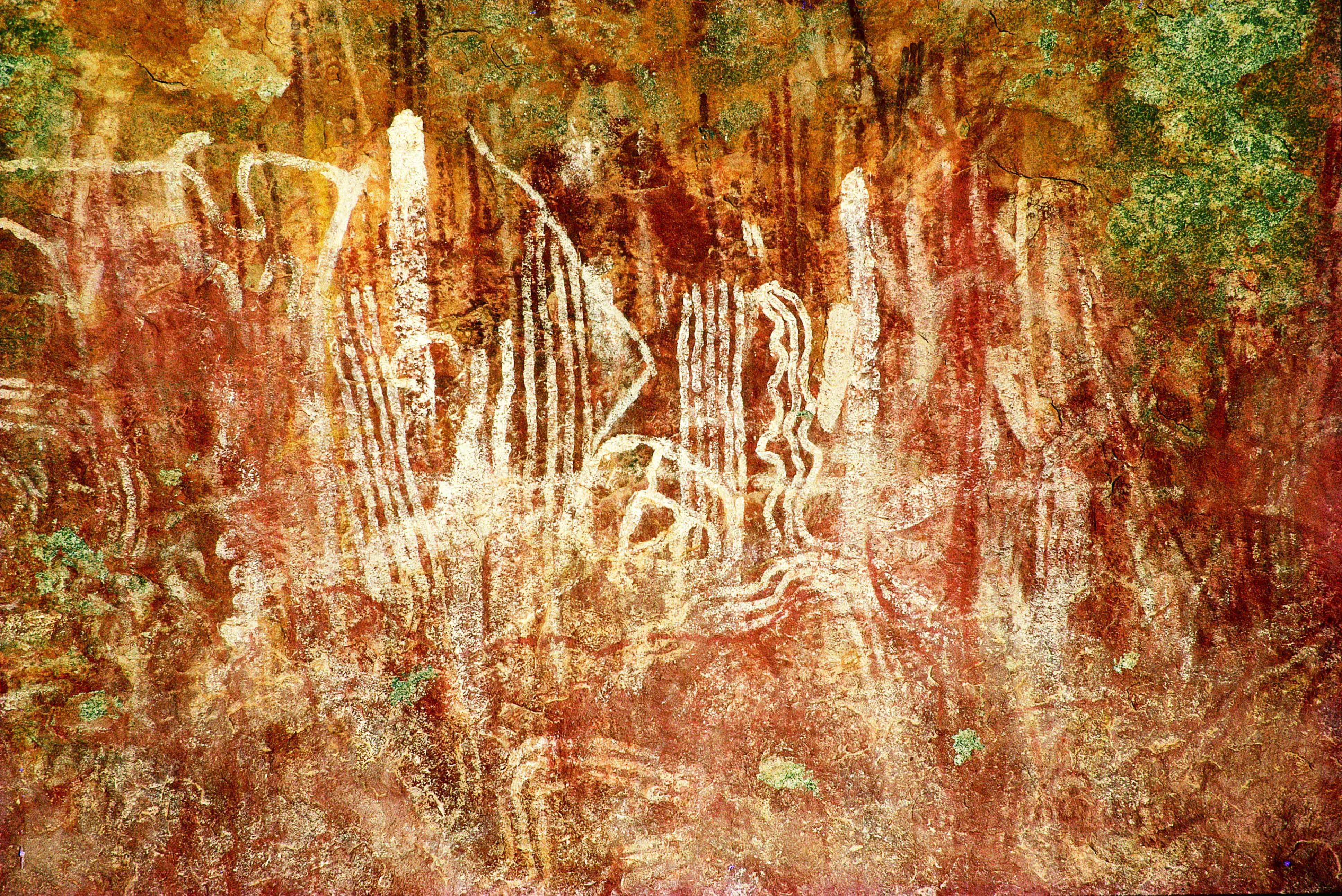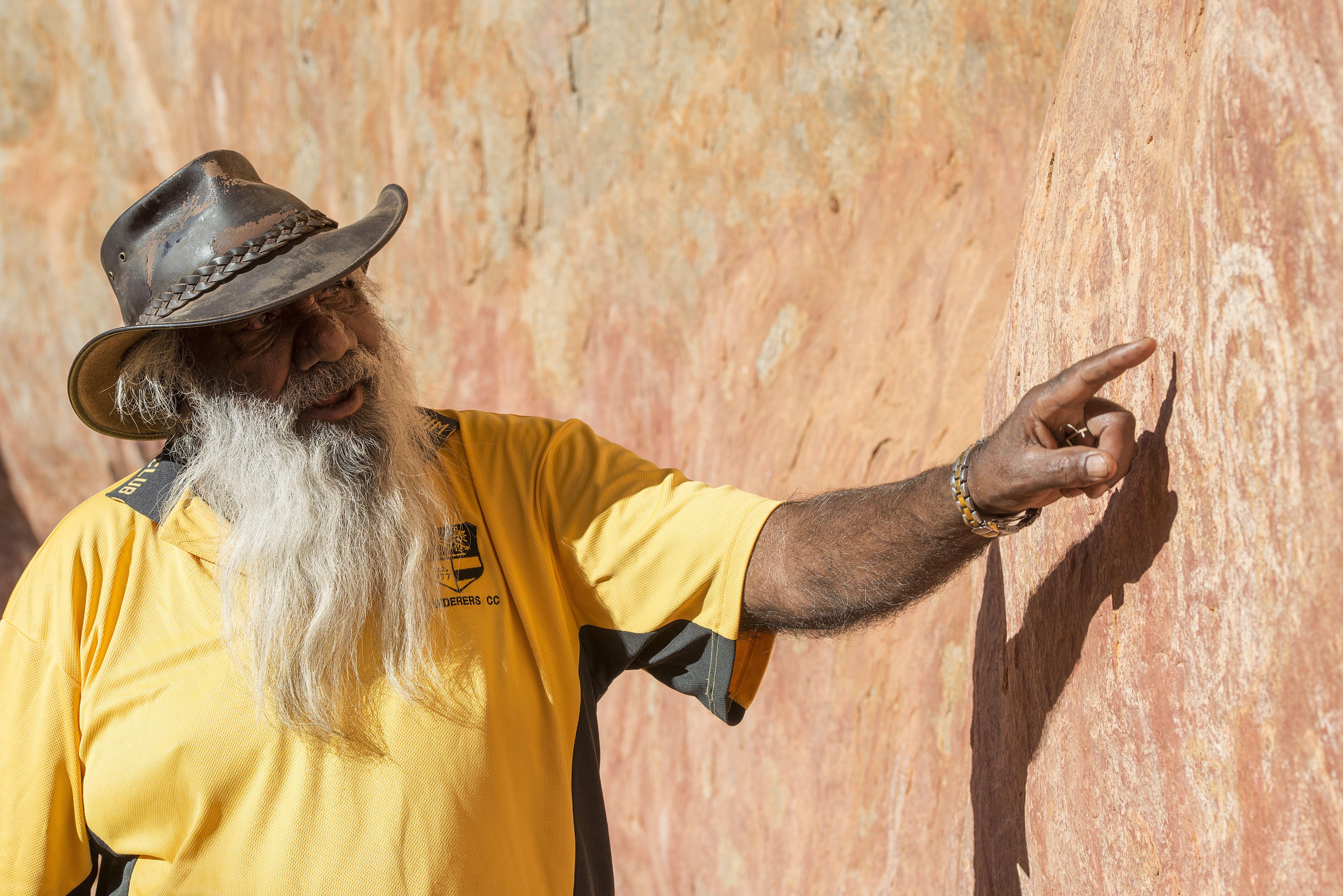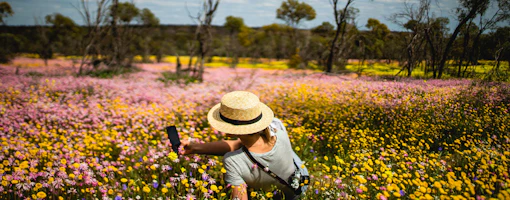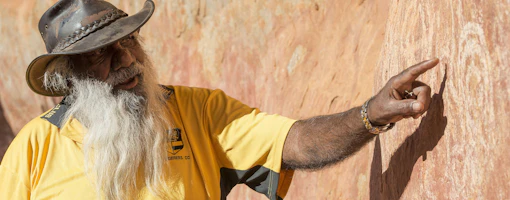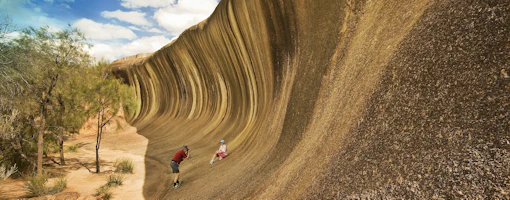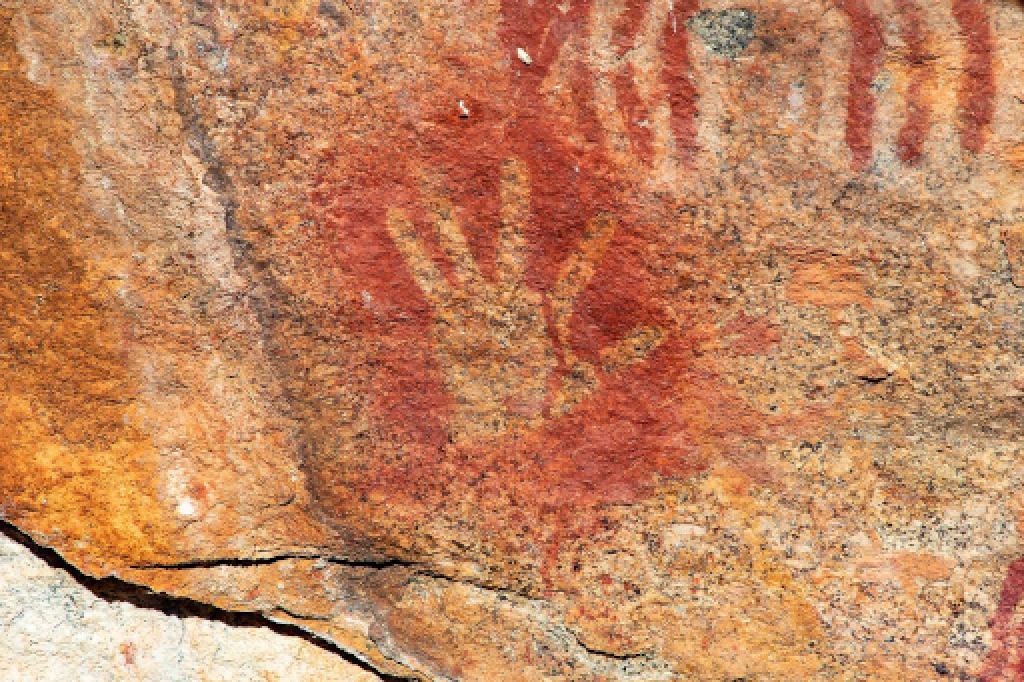
3 of the best places to see Aboriginal Rock Art in the Gascoyne Murchison
Rock art is the oldest surviving human art form. Across Australia, rock art is an integral part of Aboriginal life and customs, dating back to the earliest times of human settlement on the continent.
Petroglyphs (rock engravings) and pictographs (drawings) are a key component of rock art and can be found at three key places in the Gascoyne Murchison region of the Golden Outback.
The Granites, near Mount Magnet
Just 9km from the historic town of Mount Magnet, you’ll find The Granites. The Granites is a place of strong cultural significance to the Badimia tribe, and a natural Aboriginal Rock Art Gallery. Here you will find striking Aboriginal art which has been dated at more than 9,000 years old. The escarpment is about 15 metres high and is spread over several hectares, so allow plenty of time to explore the caves around the rocky outcrop and appreciate the proliferation of old carvings and paintings.

The Granites takes on an amazing aura in the twilight hours. Enjoy a leisurely sunset picnic and soak up the sacred atmosphere of this unique spot. There is also a 'Gnamma' hole in the area known to a few local people, this is a traditional native well covered by a stone. Ceremonial and burial sites are also located within the area, so please respect the cultural significance of the land and sites if you visit.

Mount Augustus
This geological giant or ‘inselberg’ (meaning island mountain) towering 715 metres above the surrounding landscape, is twice the height of Uluru and is visible from a distance of more than 160 kilometres. The majority rock type of sandstone is estimated to be 1.6 billion years old – which is about three times older than the sandstone of Uluru. Mount Augustus is known by the local Wadjari Aboriginal people as Burringurrah.

Whilst the hike to the summit is difficult and requires a lot of preparation, there are easier walks around the base. Try the Flintstone Rock Walk for starters. This incredible little trail is only 500 metres but takes you to a set of ancient Aboriginal petroglyphs. The carvings are hidden under a large slab of rock that bridges a creek; crawl underneath to spot them. A sign by the walk entrance will show you the way.

Walga Rock
Walga Rock is home to the largest gallery of Aboriginal rock paintings in Western Australia. Explore the large cave within the rock, which contains a range of paintings including pictures that are said to be of ships that visited the Western Australian coast in the 17th century.
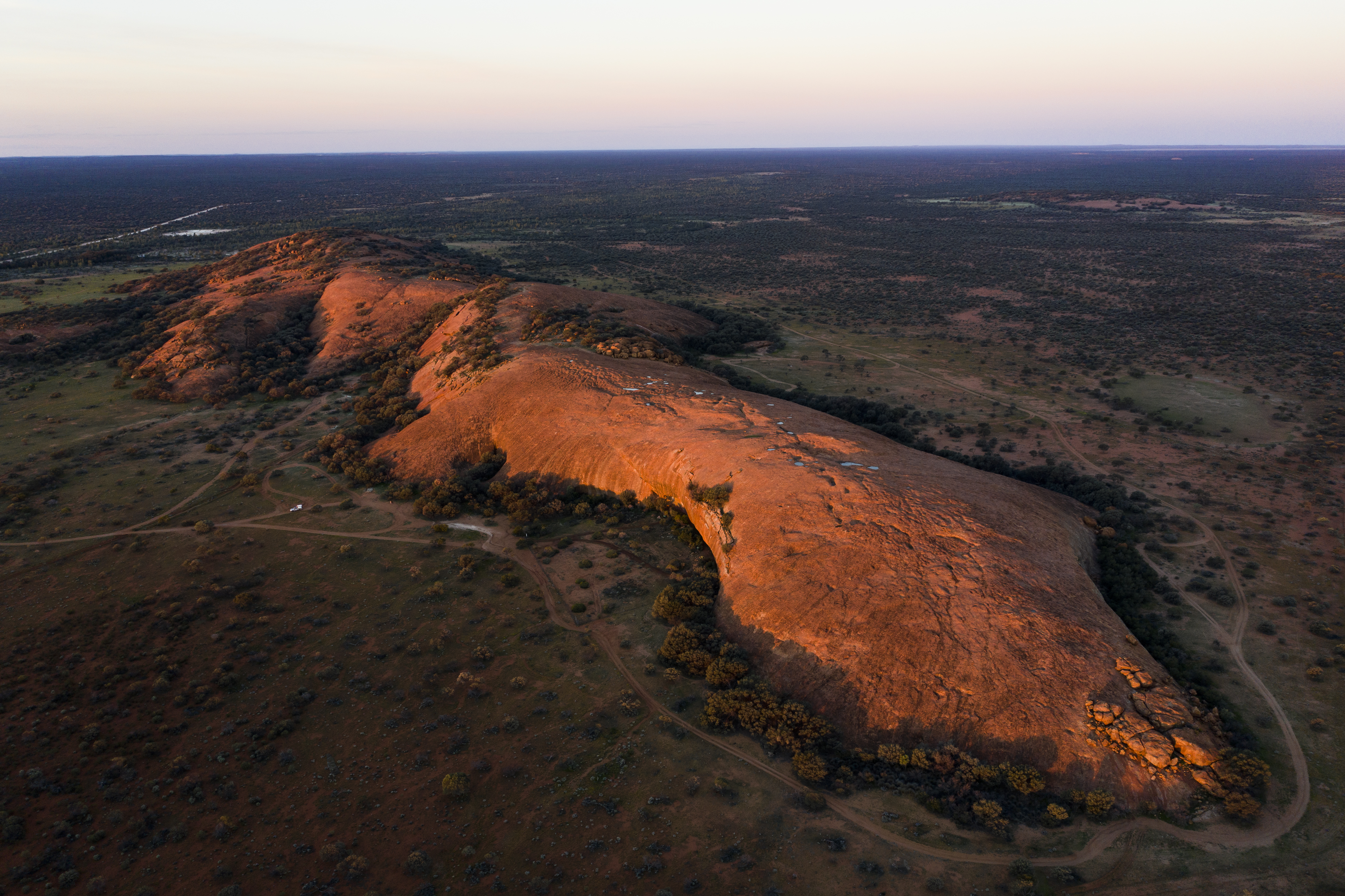
Ponder on the origins of the painting of the mysterious sailing ship and accompanying text which is thought to resemble Arabic script. The origin of the painting is unknown; one theory is that it was done by a Dutch sailor shipwrecked on the coast who was looked after by Aborigines, another theory is that it was done by an Afghan camel guide.
